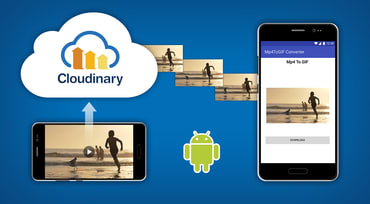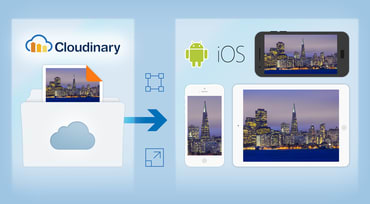Currently, the Android platform boasts the highest demand for mobile solutions, as evidenced by Google’s announcement in 2017 that there were two billion monthly active Android devices, a number that is likely to increase in the years ahead. For app developers like you, now is the right time to build and release solutions for Android. you might have also noticed that a higher percentage of apps being developed nowadays are filled with visual media: images and videos.

Globally, approximately two billion people now own smartphones, which also feature cameras capable of capturing photos and videos of a tonal richness and quality unimaginable even five years ago. Until recently, those cameras behaved mostly as optical sensors, catching light that determines the resulting image's pixels. The next generation of cameras, however, can blend hardware and computer-vision algorithms that apply to an image's semantic content, spawning creative mobile photo and video apps.


In part 1 of this blog series, we told you how we can optimize the process of uploading user images from your mobile app by taking advantage of the new pre-upload image processing functionality available in Cloudinary's iOS and Android SDKs. We showed how you can scale down all user images to the maximum size necessary before you upload them, to save bandwidth and improve app performance.

In the previous post, we showed how to upload images to a Cloudinary server. In this part, we will play with some of the features we see on the WhatsApp technology. After you or your users have uploaded image assets to Cloudinary, you can deliver them via dynamic URLs. You can include instructions in your dynamic URLs that tell Cloudinary to transform your assets using a set of transformation parameters. All image transformations and image optimizations are performed automatically in the cloud and your transformed assets are automatically optimized before they are routed through a fast CDN to the end user for an optimal user experience. For example, you can resize and crop, add overlays, blur or pixelate faces, apply a variety of special effects and filters, and apply settings to optimize your images and to deliver them responsively.

With more than one billion people using WhatsApp, the platform is becoming a go-to for reliable and secure instant messaging. Having so many users means that data transfer processes must be optimized and scalable across all platforms. WhatsApp technology is touted for its ability to achieve significant media quality preservation when traversing the network from sender to receiver, and this is no easy feat to achieve.

As mobile developers, when talking about images and videos, one of our main concerns is creating a smooth and amazing experience for our users, no matter what kind of device or network connection they are using. In this article, I’m going to show you how you can easily improve this experience using Cloudinary and Fresco.

Developing applications for mobile consumption requires facing, and overcoming, some difficult challenges. Apps need to limit their RAM, CPU and battery usage while still performing the required tasks in a reasonable time frame. If too many background tasks are running, the mobile device can become sluggish, with the battery running out very quickly. Coordination with other apps is crucial to keep the device responsive and make the battery last longer.

Handling user uploaded images and other files on your website can be a time consuming task. As images grow larger, uploading and processing them becomes more and more complex. For example, common upload issues for images and other files may relate to browser limitations, server configuration issues, memory and timeout issues. Specifically, handling user uploaded images on your website can be a hassle. In this post, we'll show how Cloudinary's cloud-based image management service can help you turn user uploading into a lightweight operation that bypasses your servers altogether.
